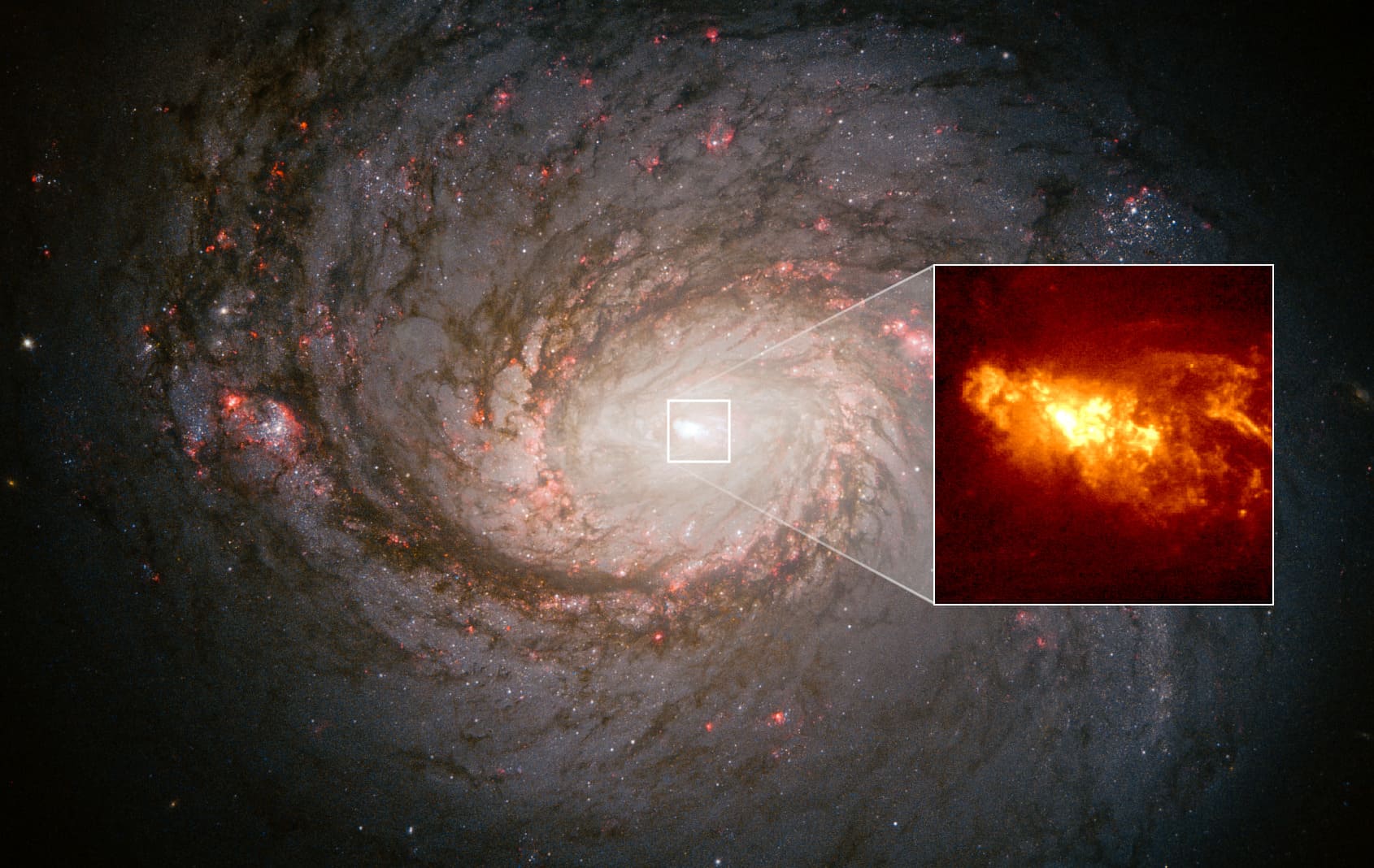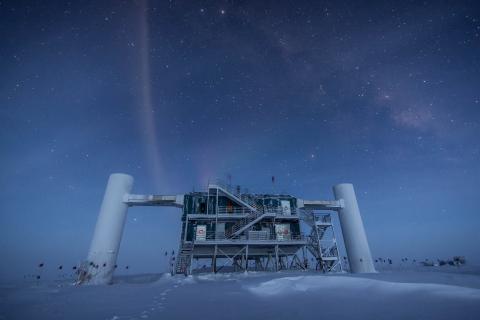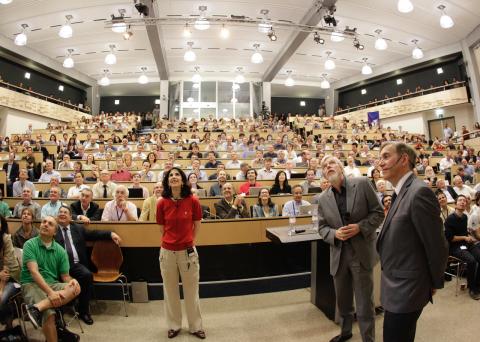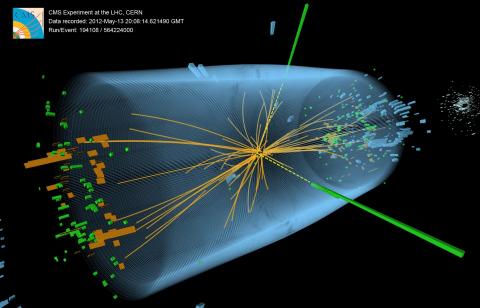Reactions to the discovery of high-energy neutrinos emitted by an active galaxy
For the first time, the IceCube collaboration team has found evidence for high-energy neutrino emission from NGC 1068, an active galaxy 47 million light-years away with a supermassive black hole. The finding, made with the detector located under the Antarctic ice sheet, is published in the journal Science.

Juan José Gómez Cadenas - neutrinos galaxia EN
Juan José Gómez Cadenas
Ikerbasque Professor of Physics at the Donostia International Physics Center (DIPC)
This is, in my opinion, a major breakthrough in neutrino astronomy, robustly establishing the connection between AGNs [active galactic nuclei] and neutrino production. The statistical significance is good (although it can and will be improved).
The IceCube result makes it possible to use a neutrino telescope to 'see', thanks to these particles, the vicinity of a supermassive black hole, hidden from conventional telescopes by huge clouds of dust and gas. The detection of 79 high-energy neutrinos in the gigantic device buried under the Antarctic ice is comparable to an X-ray, which allows us to see inside the 'patient', in this case, a super-active galaxy in the process of being devoured by a massive black hole.
The study is of high quality (IceCube's trademark) and reinforces and expands on previous studies, opening a door to detailed observations of active galaxies.
Declares no conflict of interest with IceCube.
Mariam Tórtola - neutrinos galaxia EN
Mariam Tórtola
Senior Lecturer in the Department of Theoretical Physics at the University of Valencia and at the Institute of Corpuscular Physics (IFIC)
The IceCube neutrino observatory, in operation since 2010 at the South Pole, has succeeded in identifying the active galaxy NGC1068 as a source of high-energy astrophysical neutrinos.
This is an extremely important result that definitively opens the door to neutrino astronomy (and with it to what is known as multi-messenger astronomy), already inaugurated by the IceCube experiment itself in 2018 after associating for the first time the emission of this type of neutrino with an astrophysical object known for its emissions of electromagnetic radiation, such as radio waves or gamma rays. On that occasion, the source was the blazar TXS 0506+056 and it was possible to associate the emission of a single high-energy neutrino, while now it is the galaxy NGC1068, to which it has been possible to link the origin of about 80 neutrinos. In both cases these are active galaxies in which the production of radiation would be due to the fall of material onto a supermassive black hole and where the high density of dust and gas in the central part would make the emission of electromagnetic radiation difficult. Neutrinos, on the other hand, due to their weak interaction with matter could escape even from the densest environments without any problem, providing valuable information about the processes taking place in the vicinity of supermassive black holes. Moreover, their straight-line propagation, unlike in the case of cosmic rays, which are deflected by galactic and extragalactic magnetic fields, is crucial for tracing the source of these processes.
The discovery has been made possible by improved techniques for the directional reconstruction of neutrino trajectories, which have made it possible to precisely identify NGC1608 as the source of these neutrinos.
In the future, it is expected that the extension of the IceCube observatory, known as IceCube-Gen2, together with other neutrino telescopes such as KM3NeT in the Mediterranean Sea, will be able to improve its sensitivity and identify many more sources of astrophysical neutrinos, even at higher energies. These observations will help us to unravel the fundamental processes taking place in the Universe in order to finally understand the physical mechanisms that give rise to very high-energy cosmic rays, one of the main unknowns in astroparticle physics today.
Carlos Pobes - neutrinos galaxia EN
Carlos Pobes
Postdoctoral researcher of the Q-MAD group at the Institute of Nanoscience and Materials of Aragon (INMA)
IceCube has succeeded in observing the second known source of very high-energy neutrinos, the active nucleus of the galaxy M77 47M light-years away. To do this, it has accumulated data from the telescope's 10 years of operation, observing some 80 ultra-energetic neutrinos from this object. The task has not been easy, as neutrinos are highly elusive. To put this into perspective, about one neutrino from M77 passes through the detector per second, but only 80 have been captured in 10 years.
IceCube has been trying to take a neutrino 'picture' of the Universe for all this time, but until now it has only managed to locate one other object, the blazar TXS 0506+056 (another supermassive black hole, much further away than M77). The difference is that on that occasion the detection was possible thanks to the collaboration of other telescopes around the world, which made it possible to capture a flare emitted by the object (one of the first examples of multimessenger detection). In this case, IceCube has been able to observe the continuous emission of neutrinos from M77 thanks to long exposure times and improved image analysis (thus improving the telescope's 'pointing'(*) capabilities), confirming indications published in 2020 that pointed to M77 as a possible source of neutrinos. It is also interesting to note that the black hole at the centre of M77 is obscured by the surrounding accretion disc, as we see this galaxy in profile and, therefore, its observation with other telescopes (visible-light, X-ray or gamma-ray) is more difficult. Neutrinos, on the other hand, are an ideal tool to 'see' through this disc.
Thanks to this discovery, the possible origin of the highest energy cosmic rays, one of the most important open problems in astrophysics, is beginning to be identified. Cosmic rays are charged particles that reach enormous energies. It is not clear what phenomena can accelerate these rays to these energies, and it is difficult to identify the origin of these particles, since they are deflected by intergalactic magnetic fields on their journey to Earth. Possible candidates are active galaxy nuclei (AGNs), which, in addition to cosmic rays, are also expected to produce neutrinos, which would travel unchanged to us. The positive IceCube detection of M77 and three other somewhat less intense sources therefore clearly point to these objects as one of the important sources of ultra-energetic cosmic rays, confirming the models.
These four sources account for a small percentage of all neutrinos detected by IceCube, which are so far of unknown origin. Further data accumulation will be needed to clarify whether AGNs are the only sources of high-energy cosmic rays, or whether new 'cosmic accelerators' are discovered. Indeed, given the different nature of the blazar TXS0506+056 and the AGN in M77, the collaboration suggests the existence of at least two different types of sources. Exciting times are ahead for multimessenger astronomy!
(*) The instrument has no moving parts: it reconstructs the direction of the incident particles from the light signals generated in the Antarctic ice, producing a much less sharp image, for example, than optical telescopes.
He was IceCube's Winter Over (operator) in 2012.
IceCube collaboration.
- Research article
- Peer reviewed



